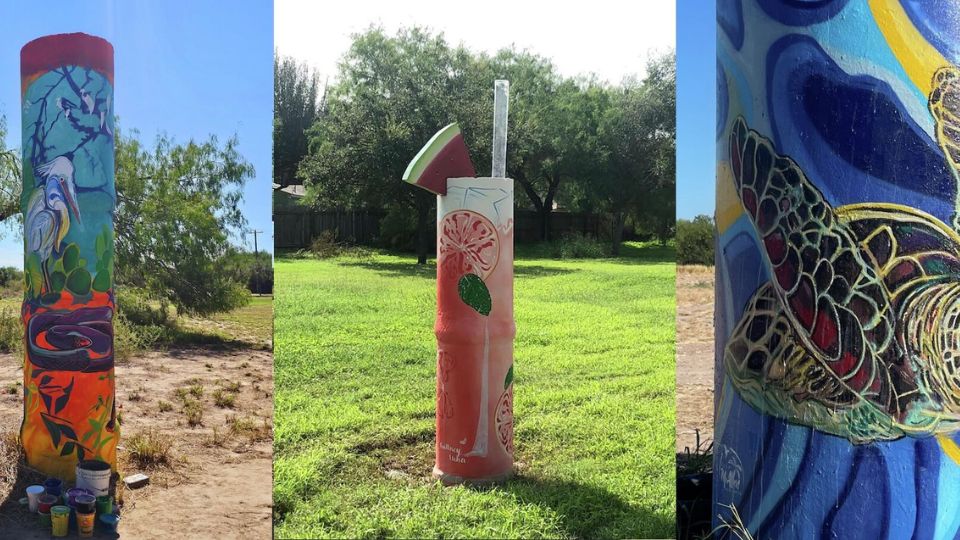Agriculture was the primary focus of McAllen’s economy for a significant portion of its history in South Texas. The fields of cotton, sorghum, citrus trees, and other crops required irrigation canals to be built away from the Rio Grande. Circular concrete pipes were also installed to control water flow and pressure.
With heights ranging from eight to 18 feet, residents of McAllen refer to these pipes as “tall stacks.” Regarding irrigation, some systems are still being used while others are not. Either way, recently they have gained more recognition for their visual appeal rather than their agricultural value. The tall stacks in McAllen have become a canvas for local artists to create intricate murals, with dozens now on display that have garnered attention beyond the Rio Grande Valley.
Keep McAllen Beautiful, a nonprofit organization, oversees the creation of the murals, blending public-art promotion with practical tasks such as addressing litter issues. (It collaborates closely with city hall, but is not officially part of the city.) Established in 1976, KMB has collaborated with nearby schools to paint public trash cans and support an adopt-a-tree initiative; its only yearly fundraiser is an Arbor Day event.
About 20 years ago, the concept of enhancing the city’s irrigation infrastructure began when an artist suggested transforming a retaining wall on a canal into a mosaic, as remembered by KMB program manager Chris Lash. “We loved it and we thought, ‘You know what, this is a fantastic way to introduce more art to the community,’” Lash said.
Also Read: Florida City Cracks Down on Spring Break Lawlessness By Applying New Rules
The first pipe project was initiated about ten years after. Another mosaic displayed the different life stages of a monarch butterfly across eight pipes in sequence. “I appreciate seeing those pipes on the road because they are all lined up,” Lash commented. “You begin with the chrysalis, then witness it opening; and as you progress, you end up with the stunning monarch.”
However, mosaics can be expensive, so a cheaper alternative is to paint the pipes instead. A pipe commission quickly gained popularity: artists ranging from 14 to their early seventies have been involved, according to Lash. They were allowed a lot of freedom as long as their work met certain community standards (no nudity, no profanity, etc.), so they continued creating murals with various themes like nature, Rio Grande Valley culture, and abstractions.
According to Lash, the official count has now reached 170 pipes. KMB has mapped out their locations on its website, showing high concentrations along N. Colonel Rowe and N. Bicentennial boulevards, as well as a portion of N. 23rd Street. Indeed, the murals can be found all over town.



Leave a Reply